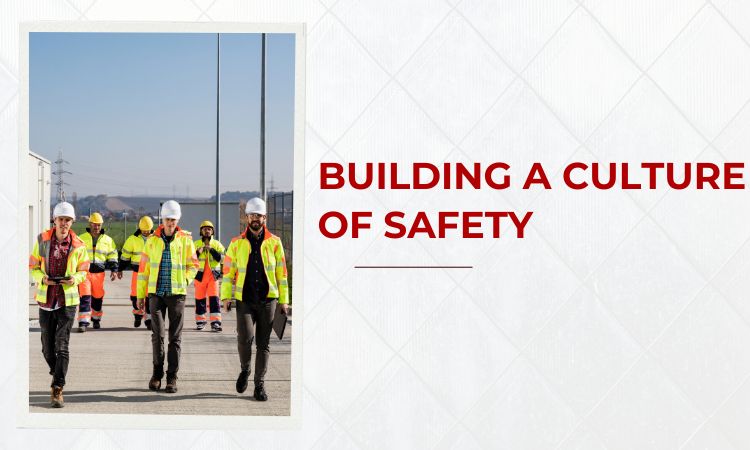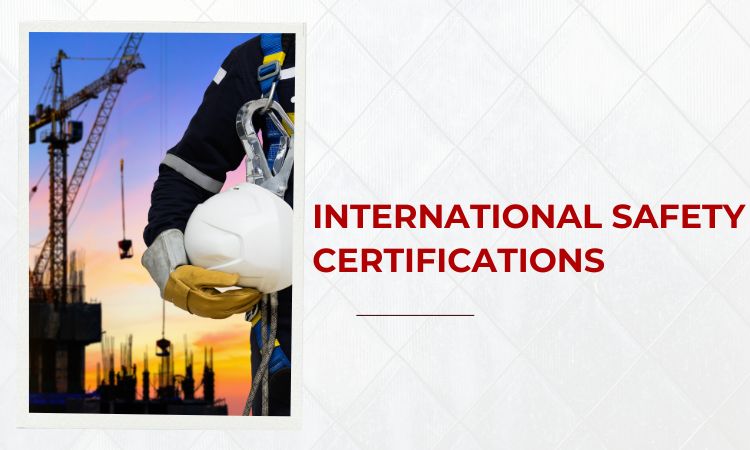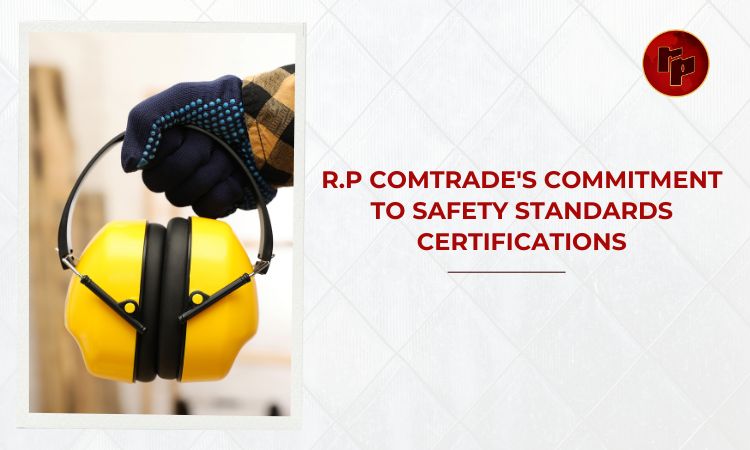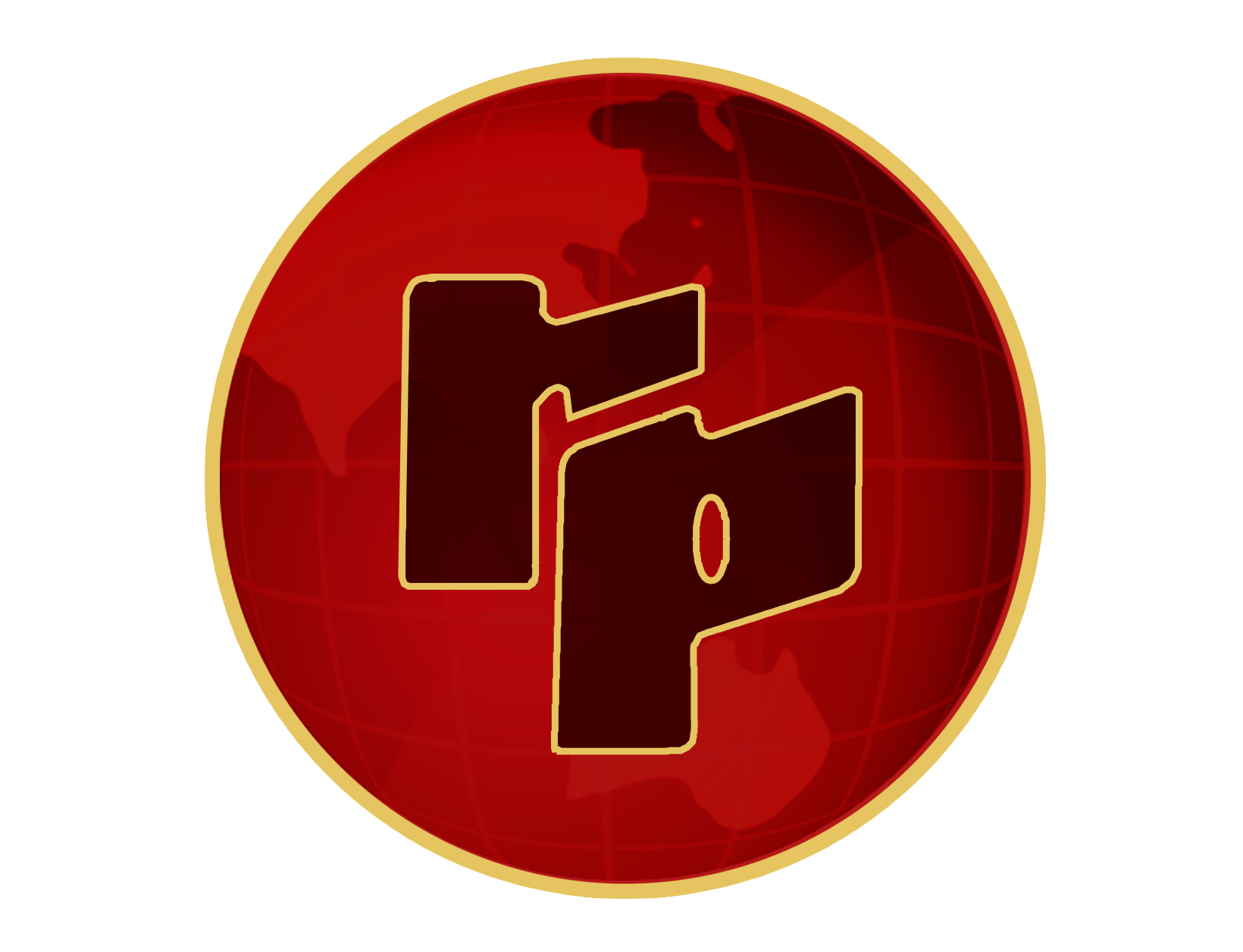Table of Contents
Introduction
The safety and well-being of individuals and organizations are critical. adherence may be challenging for firms to maintain since rules and standards are always evolving.
This is where safety standards certifications come in. R.P. Comtrade, a global leader in supply chain management,
acknowledges the importance of these certifications and has made them a priority in their operations.
These certifications demonstrate a company’s commitment to risk management excellence and providing a safe work environment for its workers, customers, and stakeholders.
In this blog post you”ll get complete information about the safety standards certifications and R.P. Comtrade’s expertise in it.

Understanding Safety Standards Certifications
Safety standards certifications indicate that a product or system has been tested and evaluated to ensure it complies with established safety standards.
Safety standards certifications are similar to laying the groundwork for a structure that strives not only to high heights,
but also to secure the stability and safety of those who enter.
These certifications demonstrate a company’s commitment to sustaining the highest levels of safety and operational performance.
It is about choosing a culture in which safety is intimately woven into the fabric of daily operations, rather than just following a compliance checklist.
Furthermore, acquiring these certificates is more than simply about improving one’s reputation
. It is a thorough process that entails delving into current safety measures, identifying areas of risk,
and ensuring that every level of the business is in line with best practices in risk mitigation and legal compliance.
This alignment is critical because it ensures that safety is not viewed as an area of expertise or function,
but rather as a common responsibility shared by everybody.
These credentials are also valuable in terms of strategy, providing organizations with a competitive advantage.
In businesses where safety is critical, certification may be a differentiator that distinguishes a company from its competitors.
It demonstrates a company’s goals and dedication to not only achieving but surpassing industry standards.

5 Essential International Safety Certifications
Exploring the world of international safety certifications reveals a challenging but profitable field for businesses looking to differentiate themselves by demonstrating their commitment to safe practices.
Let’s look at five essential certifications that help shape a culture of safety excellence.
1: Emphasis on Primary Skills and Expertise- This certification emphasizes the relevance of fundamental safety knowledge and abilities that are required across a variety of sectors.
It ensures that personnel understand safety rules, are prepared to respond to crises, and take proactive steps to prevent accidents.
2: Ensuring Compatibility with International Standards – Designed to align organizations with worldwide safety standards,
this certification demonstrates a company’s commitment to global best practices.
It demonstrates a dedication to not just meeting but exceeding regulatory standards, and promoting a safe and healthy workplace for everybody.
3. Best Practices for Risk Evaluation and Management – This certification, which emphasizes identifying risks, assessment, and prevention, serves as a prerequisite for developing robust security protocols.
It gives organizations the tools they need to predict future security problems and develop effective solutions,
guaranteeing a strong defence against unanticipated dangers.
4: The Function of Management in Fostering the Culture of Safety – Administration is crucial in advocating safety,
and this certification stresses the critical role leaders play in establishing a culture in which safety is a shared priority.
It focuses on enabling leaders to set a standard, inspire trust, and drive their people to achieve safety excellence.
5. Advancing Continuous Improvement via Auditing and Evaluation – Continuous improvement is the foundation of safety excellence.
This certification emphasizes the necessity of conducting frequent audits and assessments to review safety processes,
identify areas for development, and execute strategic changes to improve overall safety performance.
Each of these certificates is a step in achieving and maintaining a safe, healthy,
and productive work environment, demonstrating a company’s steadfast commitment to protecting its most important assets.
Choosing the Right Certification for Your Business
Beginning the process of picking a safety standards certification for your company is a critical choice that needs thorough consideration and strategic planning.
The landscape of safety certifications is broad, with each having its own set of requirements, advantages, and areas of concentration.
Making an educated decision requires a thorough awareness of your company’s particular needs,
the specific hazards inherent in your sector, and the final goals you hope to achieve through certification.
Begin by doing a thorough investigation of your operating processes, identifying possible dangers and assessing the present safety measures in place.
This first phase is critical because it paints a clear image of the areas in which your company succeeds and those that may require more improvement or external confirmation.
Consider the nature of your staff and the intricacies of the locations they operate in.
Engagement with industry peers, as well as engagement with safety standards specialists, may provide significant insights and assistance.
Networking with other firms who have completed the certification process gives real-world insight into the merits and drawbacks of each choice.
Experts, on the other hand, may provide a more technical perspective, assisting in matching your company’s requirements with the proper certification.
The Certification Process Explained
Choosing a safety standards certification for your organization is a critical choice that needs due consideration and strategic strategy.
The landscape of safety certifications is broad, with each having its own set of requirements, advantages, and areas of concentration.
As a result,
making an educated decision requires a thorough awareness of your company’s unique needs, the specific hazards associated with your sector,
and the eventual goals you hope to achieve through certification.
Begin by doing a thorough review of your operating processes, identifying possible dangers and assessing the present safety measures.
This first phase is critical because it paints a clear image of the areas where your company thrives and those that may need additional improvement or external confirmation.
Consider the nature of your staff, as well as the intricacy of the locations they operate in.
Are there any particular problems or regulatory obligations that need a certain degree of certification?
Engaging with industry colleagues and consulting with safety standards specialists can provide significant insights and assistance.
Networking with other firms that have gone through the certification process gives real-world insight into the merits and drawbacks of each choice.
Experts, on the other hand, may provide a more technical perspective, assisting you in matching the proper certification to your company’s needs.
Understanding the long-term commitment required for each qualification is also important. Consider not just the immediate effects on your business,
but also the continuous work necessary to retain certification status. This involves frequent audits,
ongoing training, and modifications to safety practices to ensure compliance with changing requirements.
When you choose the proper certification, you are not just selecting a compliance badge; you are committing to a path of continual improvement,
cultivating a safety culture that pervades all aspects of your operations.
This choice is an investment in your company’s future, increasing not just your safety profile but also your trust and reputation in the industry.

R.P Comtrade's Commitment to Safety Standards Certifications
Our experience with safety standards certifications at R.P. Comtrade has been both educational and revolutionary.
Accepting these certificates was more than just a checklist exercise for us;
it reflected a deeper commitment to creating a work environment where safety is vital and integrated into all aspects of our operations.
– Our proactive approach to safety and compliance has served as a guiding light, bringing us through the difficult process of reaching and exceeding international safety standards.
To get these certifications, we had to conduct a thorough examination of our existing policies, identify possible dangers, and carefully match our operations with worldwide standards.
– This approach was more than simply a functional revamp; it was a catalyst for cultural change in our business, fostering a feeling of duty and caring at all levels.
– Our leaders were important in this shift, embracing safety concepts and setting a good example. Their dedication helped to create a culture in which safety is viewed as a core value rather than an obligation.
– This leadership impact, along with extensive training programs and continuous improvement activities,
has enabled our personnel to not only accept but also promote safety standards.
Navigating the accreditation process has strengthened our conviction in the need for ongoing learning and adaptability.
Staying on top of changing safety regulations and incorporating them into our operations has been critical to not just sustaining but also improving our safety standards.
– R.P. Comtrade’s expertise with safety standards certifications demonstrates our steadfast commitment to the well-being of our workers, customers, and the larger community.
It demonstrates our dedication to not just operating within the confines of compliance, but also to leading the way in safety excellence.
Staying Updated on Evolving Safety Requirements
In today’s changing world of safety requirements, complacency is not an option.
The regulatory and best practice environment is always evolving to meet new problems, technology, and insights into workplace safety.
Keeping up with these developments is a critical component of R.P. Comtrade’s commitment to protecting our community, not merely a statutory necessity.
To successfully manage this ever-changing world, you must be proactive.
We promote continuous learning and utilize a variety of resources to keep our employees current on the most recent developments in safety regulations.
This focus extends beyond basic awareness to actively integrating new demands into our operational processes and training programs.
Participation in industry forums, workshops, and seminars is an essential component of our strategy.
These platforms give critical insights into developing trends and encourage discussions with peers and experts, thus increasing our understanding and application of safety standards.
Furthermore, subscribing to updates from certifying organizations and regulatory agencies ensures that we get timely notifications about changes and upgrades.
At the core of our strategy is the notion that keeping up with changing safety standards is a shared duty.
We establish a culture of collective vigilance in which all team members feel empowered to contribute to our continuous pursuit of safety excellence.
Through this joint effort, we not only meet current demands but also plan for future advancements, ensuring that R.P. Comtrade stays at the forefront of safety innovation.
Conclusion
Obtaining and keeping these certifications demonstrates a consistent commitment to quality.
Staying current on developing standards, and incorporating these insights into the fundamental fabric of our operations.
This proactive posture guarantees that firms like R.P. Comtrade are more than simply players in the safety debate;
we establish standards and cultivate an atmosphere in which safety transcends the workplace and becomes a shared priority.
Finally, keep in mind that Businesses may genuinely thrive when they commit to fostering an atmosphere of safety and quality, which leads to an unprecedented level of operation.
